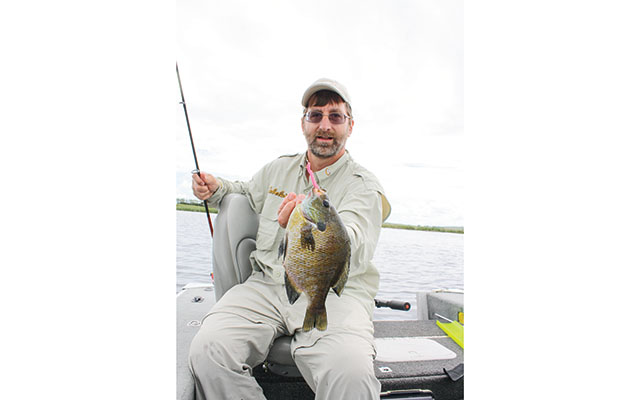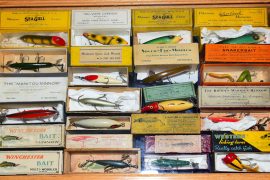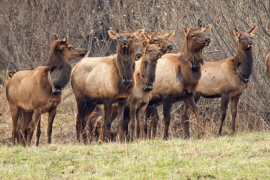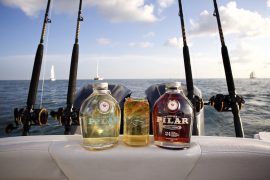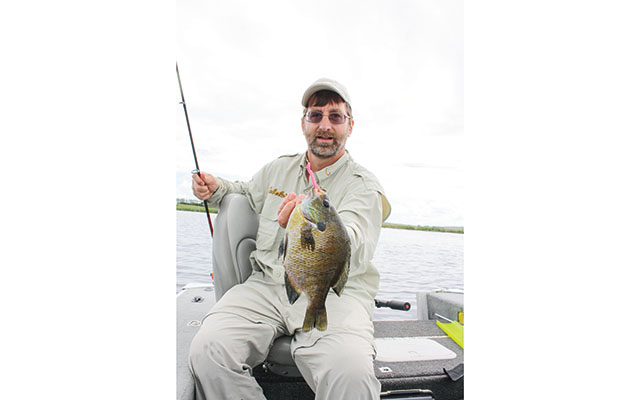
How many times have bass anglers had their plastic worm or Senko-type stickbait nipped in the butt by aggressive bluegills? Decades ago while fishing my first Creme worms on lakes of eastern Pennsylvania, distinguishing taps of tail-nibbling bluegills and a bass bite were quickly learned, but another important lesson was missed. Regardless if it was in Pennsylvania, Wisconsin, Minnesota, Nebraska, or Texas, fishing soft-plastic worms and stickbaits often resulted in encounters with tail-grabbing bluegills. For years, they were trying to tell me something, but it wasn’t until nearly 10 years ago that I finally listened.
While the bulk of a bluegill’s diet is composed of small invertebrates, being opportunists they at times eat larger food items. When they consume a minnow or leech, this windfall of nourishment can temporarily relieve them of the need to consume countless smaller insect larvae or zooplankton. While rarely the largest fish species in any lake, bluegills can be fearless. With a small mouth and large attitude, they occasionally take on quarry one would think they have no business messing with. Their mouth, however, has determined their feeding norms, exceptions, and how they must go about eating a meal.
After viewing many fish-feedings in large freshwater aquariums across the country, I’ve observed how bluegills address larger food offerings. After closing the distance with prey, most gamefish like bass and trout can simply flare their gills and inhale their meal. Bluegills, however, require a more labor-intensive technique. First, their small mouth requires they be closer to their quarry than most other species because it doesn’t allow them to move the same volume of water larger-mouthed species can, including other panfish like crappies and perch. They’re less able to inhale foods not in their immediate proximity. Most often, bluegills approach larger prey from behind to create an advantage by staying out of sight as long as possible. They then overtake their target and grab it. This isn’t much different than when a bluegill grabs the tail of your plastic worm while bass fishing.
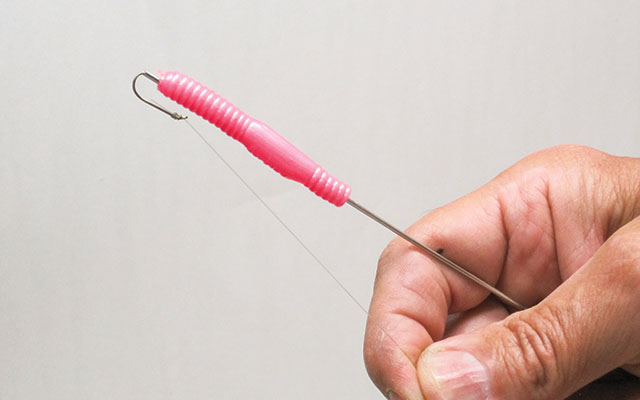
Nine years ago I came upon a clearance bin of 2-inch Yamamoto Senkos. While looking at this lure and remembering how bluegills harass my 5-inch baits, I thought, “What bull bluegill on the planet could possibly resist these?” This lure was perfect to capitalize on the sometimes aggressive nature of large bluegills, but it would need to be rigged in a way that yielded a high hooking percentage with their little mouths.
Bluegills almost always attack a soft-plastic worm on the back end, so I needed to figure out how to rig worms with the hook in the tail—tail-gunner style, you might say. I borrowed a tool used by livebait fishermen, the Kalin’s Worm Threader. It’s designed to run your hook and line through the entire length of a live nightcrawler. After some experimentation, I discovered they work equally well on plastics, including the little Senko. Small softbaits are easily affected by hook weight, so proper selection is critical. I didn’t want a situation where the hook tipped the bait to a vertical position while sinking. I settled on the Mustad 94840 Dry Fly Hook in #8 and #10. The hook’s light weight doesn’t overpower the bait and is durable.
My first test of the tail-hooked Senko occurred in the spring of 2007 on my favorite bluegill lake in the Minneapolis metro area of Minnesota. It was spring when warming water brings bluegills shallow but before spawning. I cast the tiny Senko and began a slow retrieve with pauses to let it fall tantalizingly. Immediately I hooked and landed a large bluegill. Many bluegills later I concluded it was an effective presentation that targeted bluegills of above-average size, as well as bonus species like crappies, stocked trout, and bass. There was a time when I believed that a tail-hooked, 2-inch Senko was the most productive big-bluegill presentation on the planet. While I’ve modified that opinion somewhat since then, there was no doubt I was onto something.
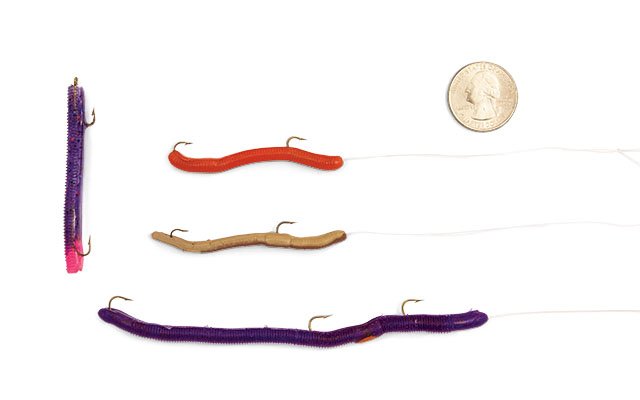
There were two primary limitations of this lure, however. Despite the popularity of larger Senkos, the 2-inch model was hard to find. Also, you need to take time to rig them tail-hook style, because hooking them in the front like a bass presentation reduces hooking percentage. While I horded a large supply of 2-inch Senkos, I also experimented with the more readily available 3-inch version. The jump from 2 to 3 inches is where a Senko becomes less of a panfish lure and more of a bass bait. The 3-incher isn’t just longer but also is thicker, attracting more bass and fewer bluegills….

